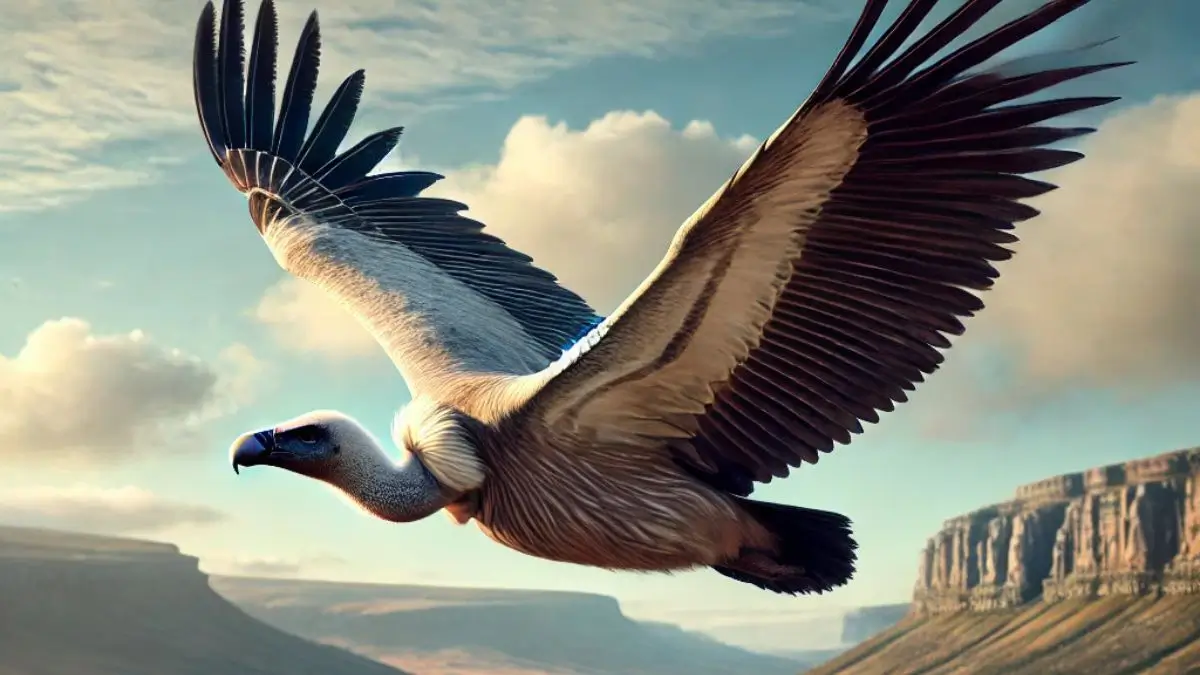The recent sighting of 85 Cape Vultures (Gyps coprotheres) in South Africa’s Eastern Cape after three decades marks a significant milestone for conservationists. These vultures, exclusive to Southern Africa, play a vital role in maintaining ecological balance by preventing disease spread through carrion disposal. Conservation efforts have helped stabilize their population, but vultures globally continue to face threats. This resurgence highlights the importance of sustained conservation initiatives.
Key Points on Cape Vultures and Their Conservation
1. About Cape Vultures (Gyps coprotheres)
- Scientific Name:Gyps coprotheres
- Common Name: Cape Vulture
- Family: Accipitridae (Old World Vultures)
- Exclusive Habitat: Southern Africa
- Key Role: Prevents disease spread by consuming carrion
2. Recent Sighting in Eastern Cape
- First sighting in over 30 years near Mountain Zebra National Park, Spitskop Cradock
- 85 wild Cape Vultures spotted
- Conservationists view this as a positive sign of population recovery
3. Population Decline and Conservation Status
- 1980s–2007: Cape Vulture numbers declined by 60-70%
- 2021 Estimate: 9,600 to 12,800 mature individuals
- IUCN Status: ‘Vulnerable’ (previously ‘Threatened’)
Major Threats
- Habitat loss
- Poisoning (accidental or intentional)
- Power line electrocution
- Decreasing food availability
4. The Role of Vultures in the Ecosystem
- Natural scavengers that help dispose of animal carcasses
- Prevents the spread of deadly diseases like anthrax, botulism, and rabies
- Controls populations of feral dogs and rats, which can be disease carriers
5. The Global ‘African Vulture Crisis’
- 23 species of vultures globally
Two families
- Accipitridae (Old World Vultures – 16 species, including Cape Vultures)
- Cathartidae (New World Vultures – 7 species)
- Cape Vulture is one of only three vulture species exclusive to Africa
6. Conservation Efforts and Future Steps
- Vulpro, a nonprofit dedicated to vulture conservation, is actively working to protect these birds.
Conservationists stress the need for,
- Stronger anti-poisoning laws
- Habitat protection
- Sustainable food sources
- Reducing electrocution risks from power lines
| Summary/Static | Details |
| Why in the news? | Cape Vultures Spotted After 30 Years in South Africa’s Eastern Cape |
| Species | Cape Vulture (Gyps coprotheres) |
| Location of Sighting | Spitskop Cradock, near Mountain Zebra National Park, South Africa |
| Last Sighting in Eastern Cape | Over 30 years ago |
| Current Population Estimate (2021) | 9,600 – 12,800 mature individuals |
| Threats | Habitat loss, poisoning, electrocution, food scarcity |
| Conservation Status | (IUCN) Vulnerable |
| Ecological Role | Scavengers, prevent disease spread |
| Conservation Efforts | Anti-poisoning measures, habitat restoration, food security initiatives |
| Significance of Sighting | Positive sign of recovery, highlights conservation success |



 ISRO Launches RESPOND Basket 2025, Calls...
ISRO Launches RESPOND Basket 2025, Calls...
 LVM3-M6 Rocket Set to Launch on December...
LVM3-M6 Rocket Set to Launch on December...
 Michaela Benthaus to Make History as Fir...
Michaela Benthaus to Make History as Fir...







